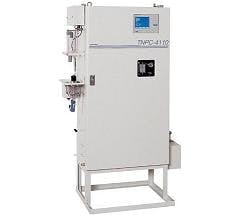Latest Technology in Nutrient Analysis/Monitoring Systems
Regulations are under way to control the nutrient discharge into the environment. Wastewater treatment and water utilities that regulate nutrient levels will be issued permits, and the recommended goals that are currently followed soon will be set as required standards that will have to be met.
In addition, utilities will have to find alternative techniques to the currently used manual techniques to help achieve maximum efficiency.
Current techniques require extensive labor in sampling and treatment, as well as in analysis of samples. To reduce the labor and, more important, the cost, monitoring within such utilities is reduced to biweekly, rather than hourly. Reduction in the frequency of analysis/monitoring means that the discharge is either over treated or under treated, due to lack of information. Under treatment means more nutrients are discharged and over treatment means more carcinogenic chemicals are discharged, both of which will have a drastic affect on all aspects of the environment.
In addition, current research calls for alternative techniques to be used for analysis of nutrients, as variability in the results has been experienced with the currently used techniques.
Shimadzu recently introduced the new Online TNPC-4110C analyzer for Total Nitrogen (TN), Total Phosphorus (TP) and Total Organic Carbon (TOC) analysis.
The analyzer demonstrates the latest technology in nutrients analysis systems on the market. The analyzer has the capability of automatically sampling, treating (physically and chemically), digesting, and analyzing the samples.
As a result, maximum efficiency is achieved for present and future utilities, through reduction of the involved labor, time, and cost. Most important, the system facilitates adjusting the treatment of the discharge, creating a safer and better environment.
Recent installation
The analyzer was installed at Little Patuxent Water Reclamation Plant, operated by Howard County Bureau of Utilities in Columbia, Md. The analyzer was easily installed at the influent lines. Prior to installing the TNPC-4110C, the plant analyzed the influent biweekly to reduce the labor and cost involved in analysis, which meant less information about the nutrient levels; accordingly, the treatment of the discharge was affected.
After the TNPC-4110C was installed, the frequency of analysis increased from biweekly to hourly, as no labor is involved in the whole process.
The TNPC-4110C enabled an increase in frequency of analysis, displaying a better monitoring system with a faster response, resulting in a more effective treatment that can be adjusted according to the level of the nutrients. Experiencing the easiness and reliability of the analysis/monitoring process with the Shimadzu analyzer, the plant is looking forward to connecting the instrument at other points within the utility to help it monitor nutrients and adjust the treatment, e.g. after the biological nutrient reactors, clarifiers, and before effluent discharge.
